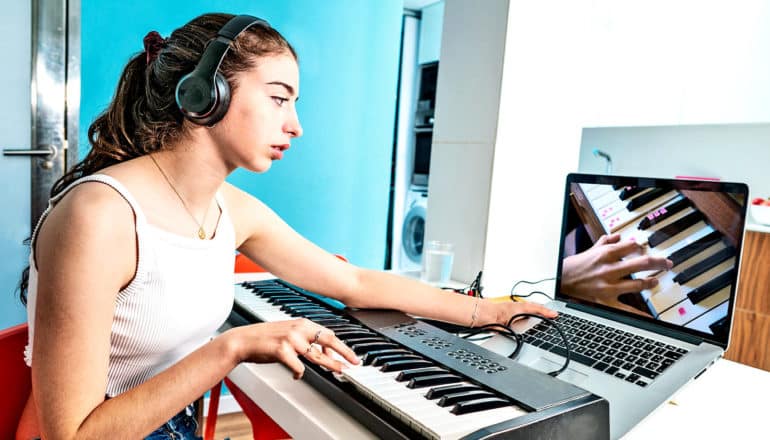
In K-12 music classes and performances may look different this fall, but creativity and music-making technology will mean classes won’t be silenced, one expert says.
“There are so many online tools out there that music educators can use to bring students together during the COVID-19 pandemic,” says Christopher Cayari, assistant professor of music education in the Patti and Rusty Rueff School of Design, Art, and Performance at Purdue University.
“One option is for programs to host online concerts or performances through the recording and mixing of virtual ensembles and individual performances,” Cayari says.
Platforms like Soundtrap by Spotify and Protools are great resources for sound editing. Other software like Flipgrid and Adobe Premiere do video editing, while Acapella by PicPlayPost and BandLab are compilation apps available for mobile devices to create musical productions amid the pandemic.
Cayari encourages music educators to experiment with these kinds of software to make music with their students, and the skills they develop while distance learning can then be carried into physical classrooms after the pandemic is over.
“Putting together a virtual ensemble can be difficult, but I have seen many tech-savvy educators or sound engineers helping music educators create virtual performances,” Cayari says.
“Students can also collaborate with one another to create anything from karaoke videos to vlog projects. The great thing about technology is that students can collaborate with others without geographical restraint.”
For the last 10 years, Cayari has researched online music making and virtual performances, focusing most of his attention on YouTube and how the platform has changed the way people create, consume, and share music.
Cavari says online music-making projects, research, technologies, and literacies occur within three dispositions:
- Do-it-yourself: “There are many avenues for do-it-yourself projects thanks to social media or audio recording websites like SoundCloud or Bandcamp. This method is great for students because it allows them to learn for themselves about the aspects that go into music recording projects.”
- Do-it-with-others: “Online music making isn’t a new concept. For many years, people have been collaborating with others to create music and connect with one another through the production of music.”
- Do-it-for-others: “These type of performances are organized projects where individuals submit their own performances and someone else pulls it all together. Everyone from the organizer to the performers to the editors have a hand in creating something for the enjoyment of others.”
A special issue of the Journal for Popular Music Education, which Cayari and Janice Waldron from Windsor University in Ontario, Canada coedited, focuses on learning, performing, and teaching, and includes international research about how music teachers use the internet to teach students.
Source: Purdue University
The post How tech can keep virtual music class pitch perfect appeared first on Futurity.
from Futurity https://ift.tt/3gdM4O1
No comments:
Post a Comment